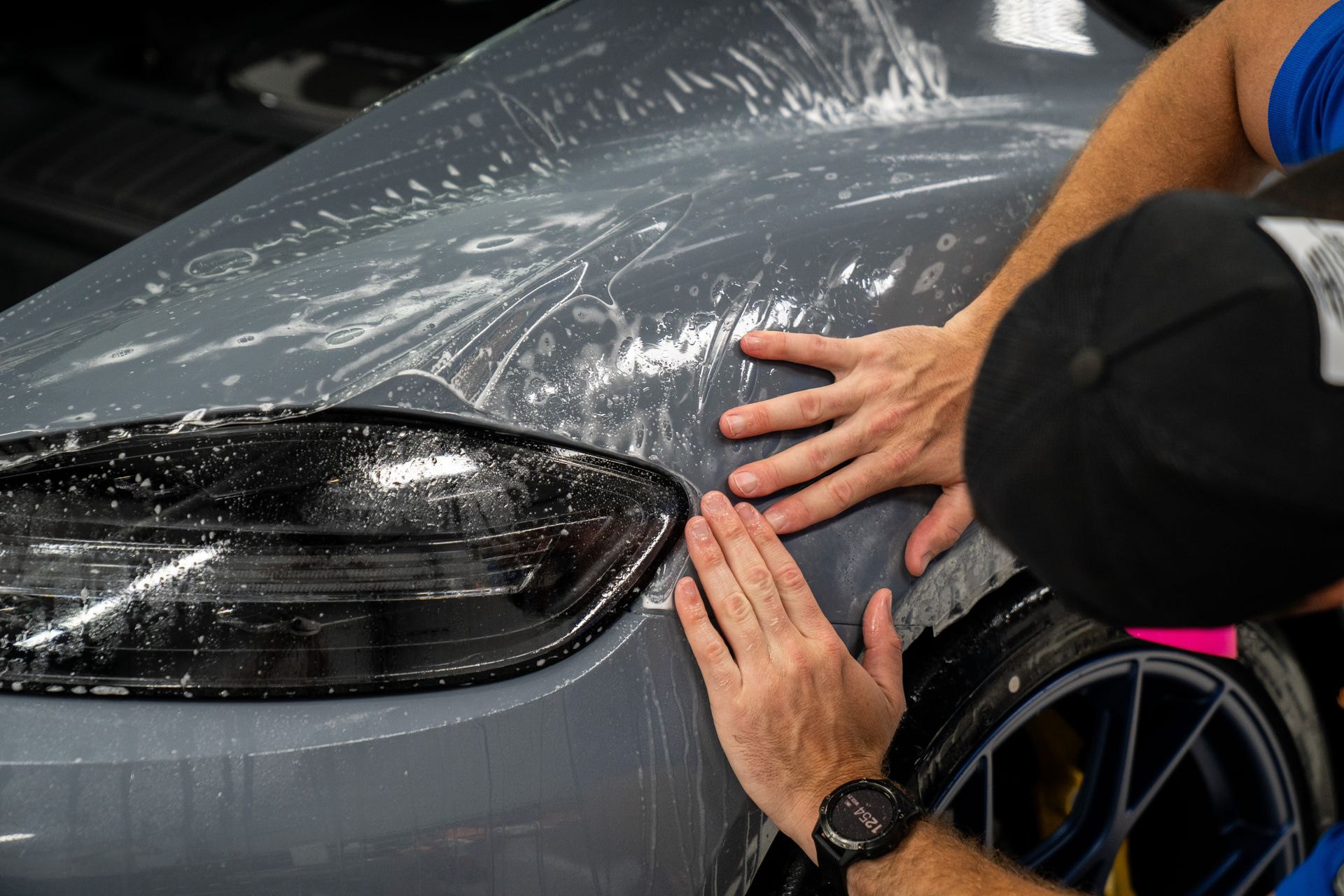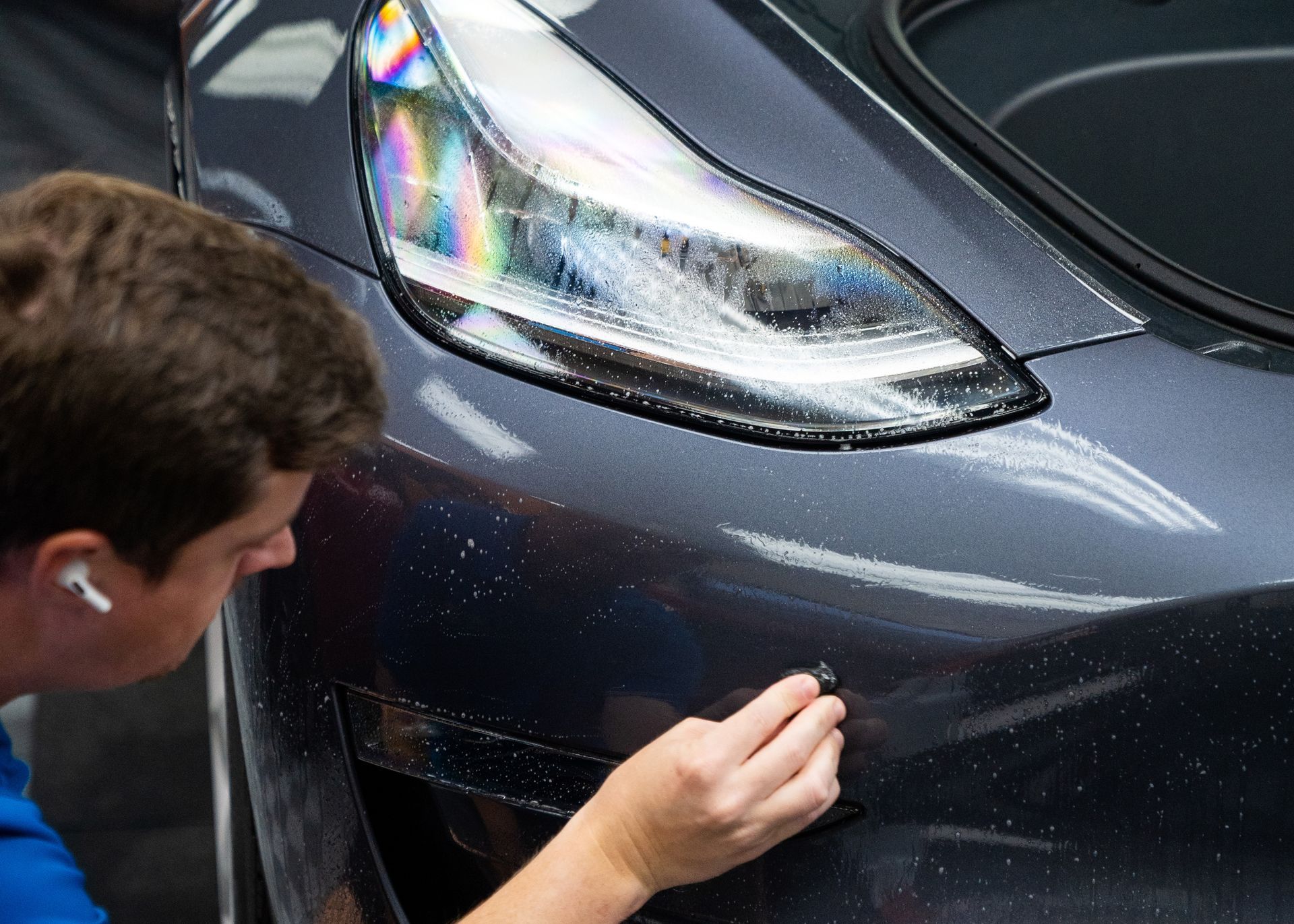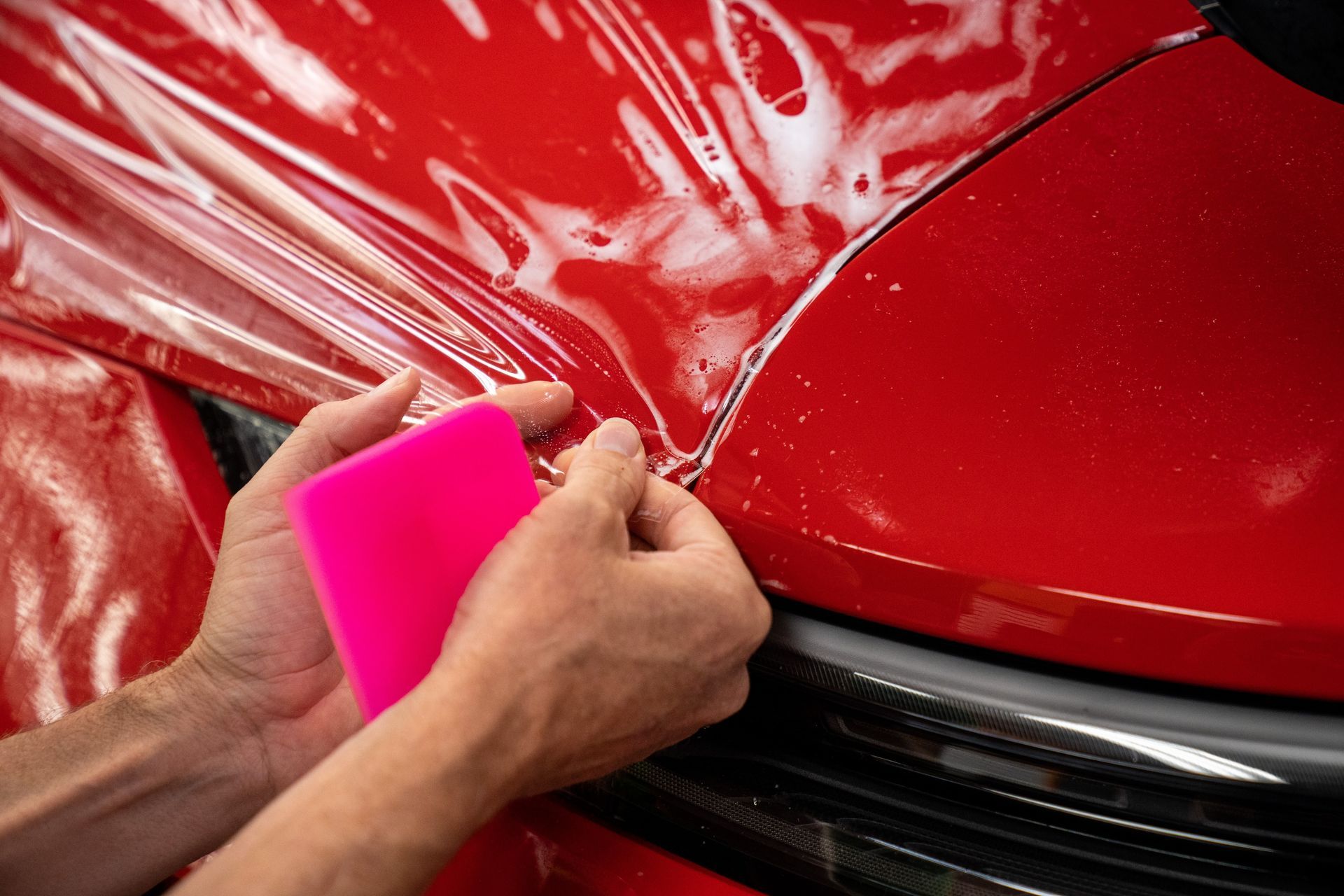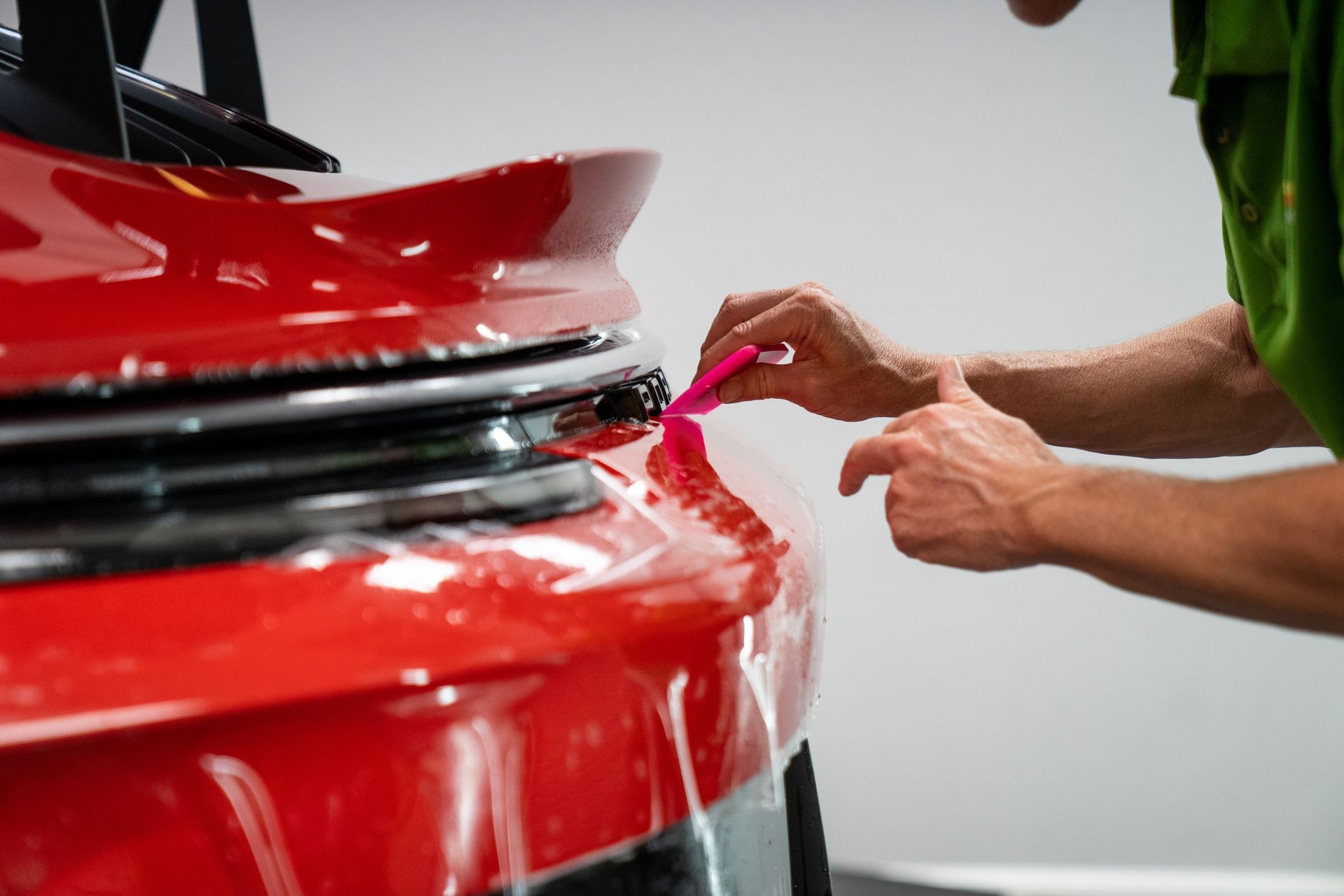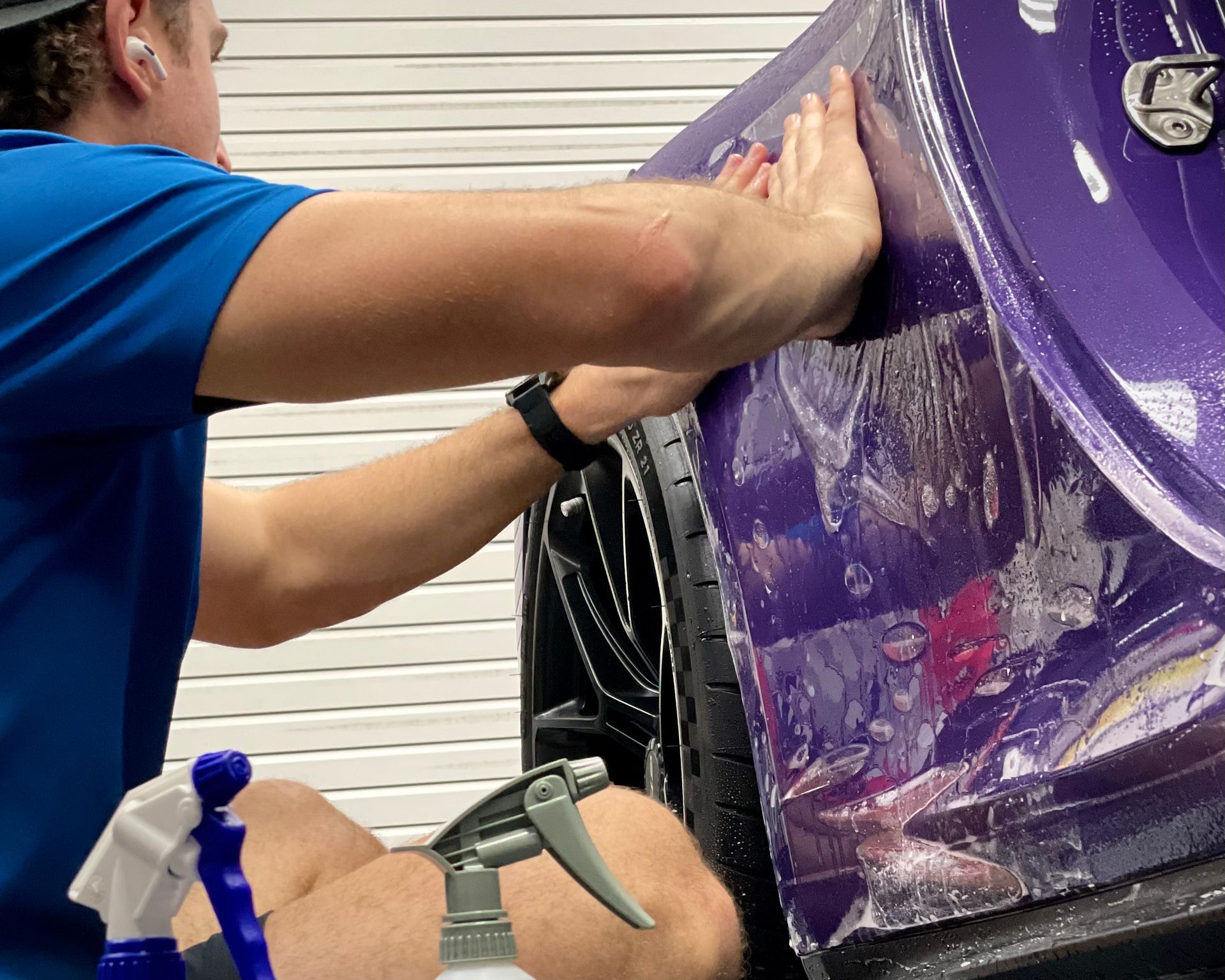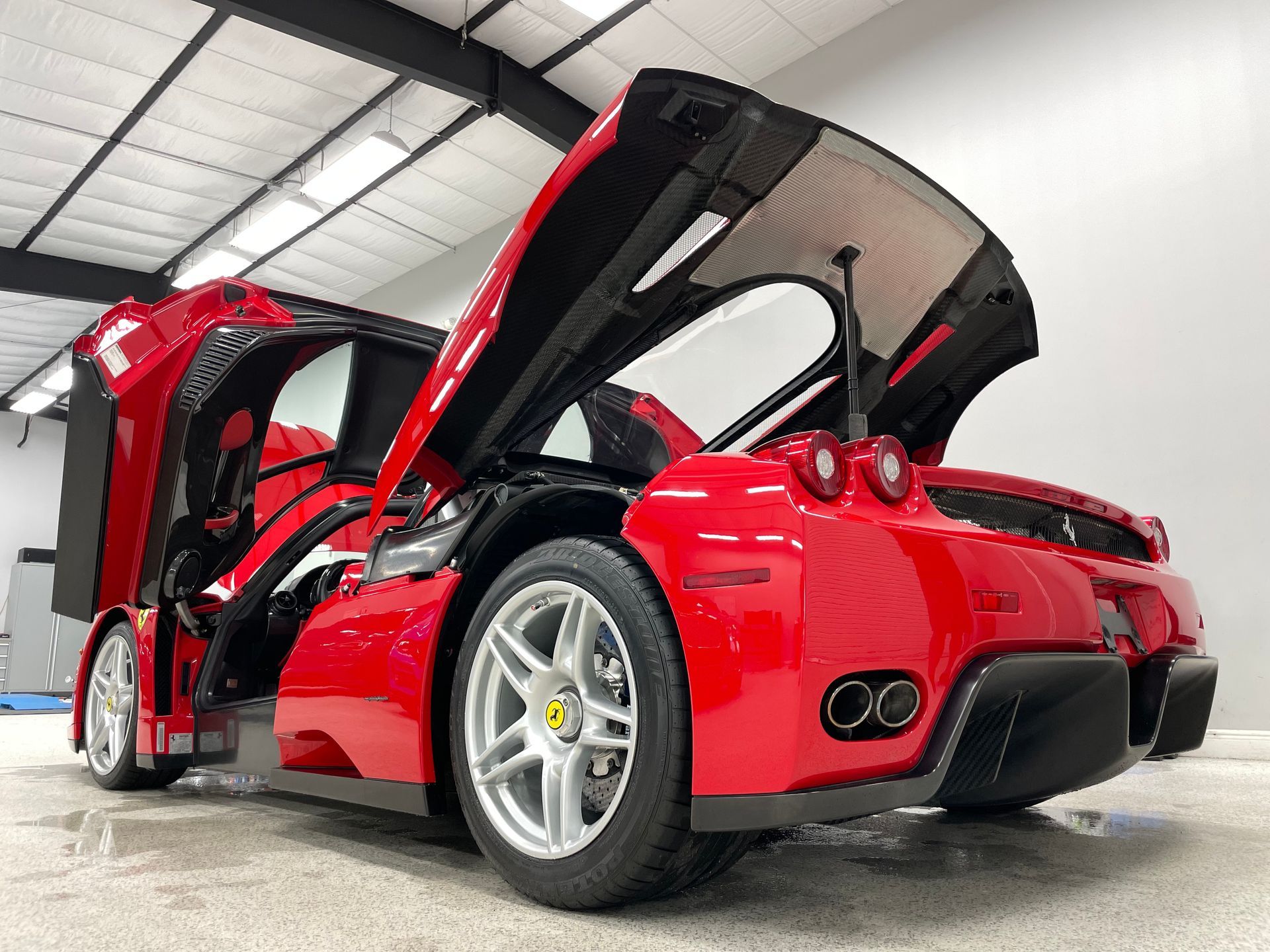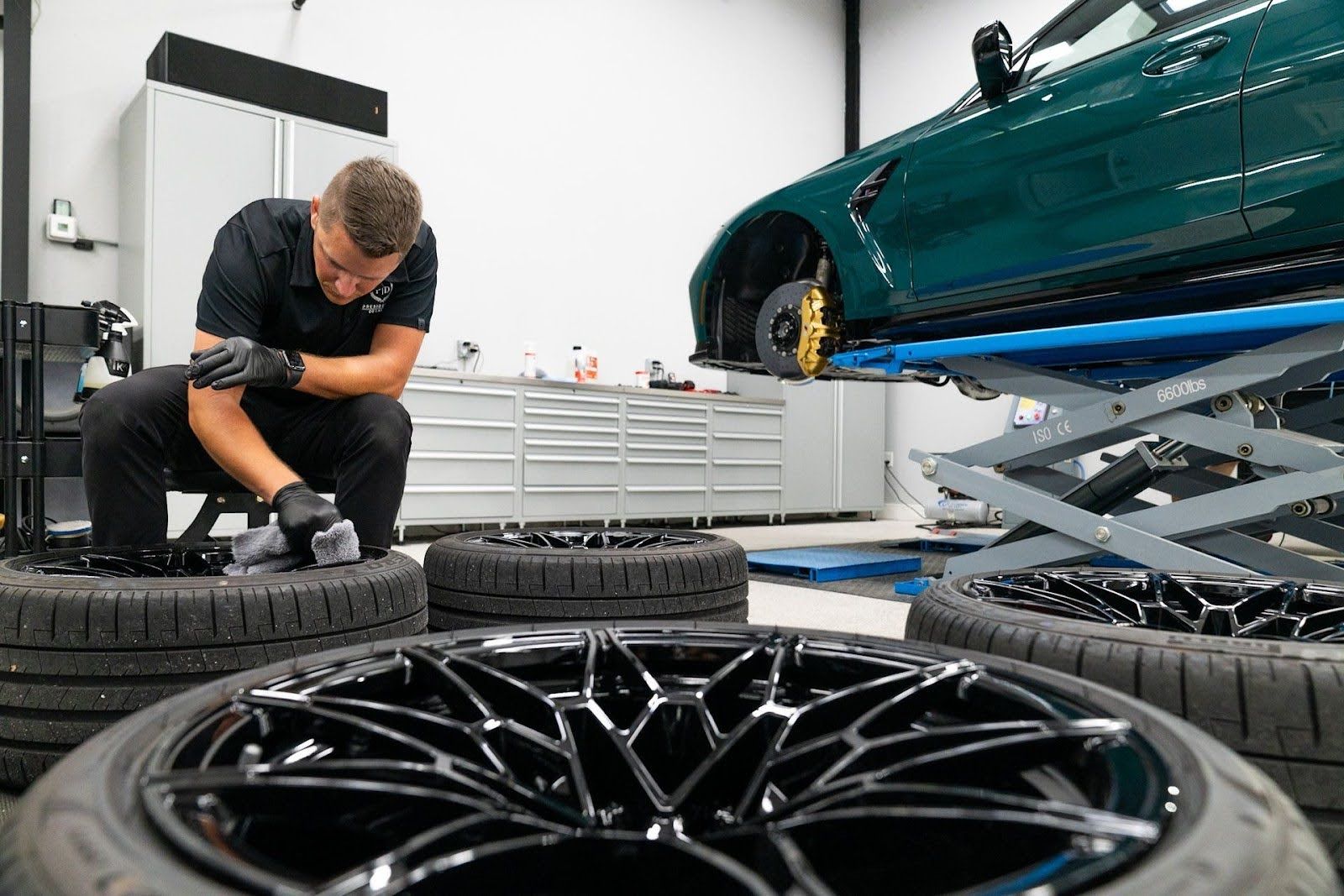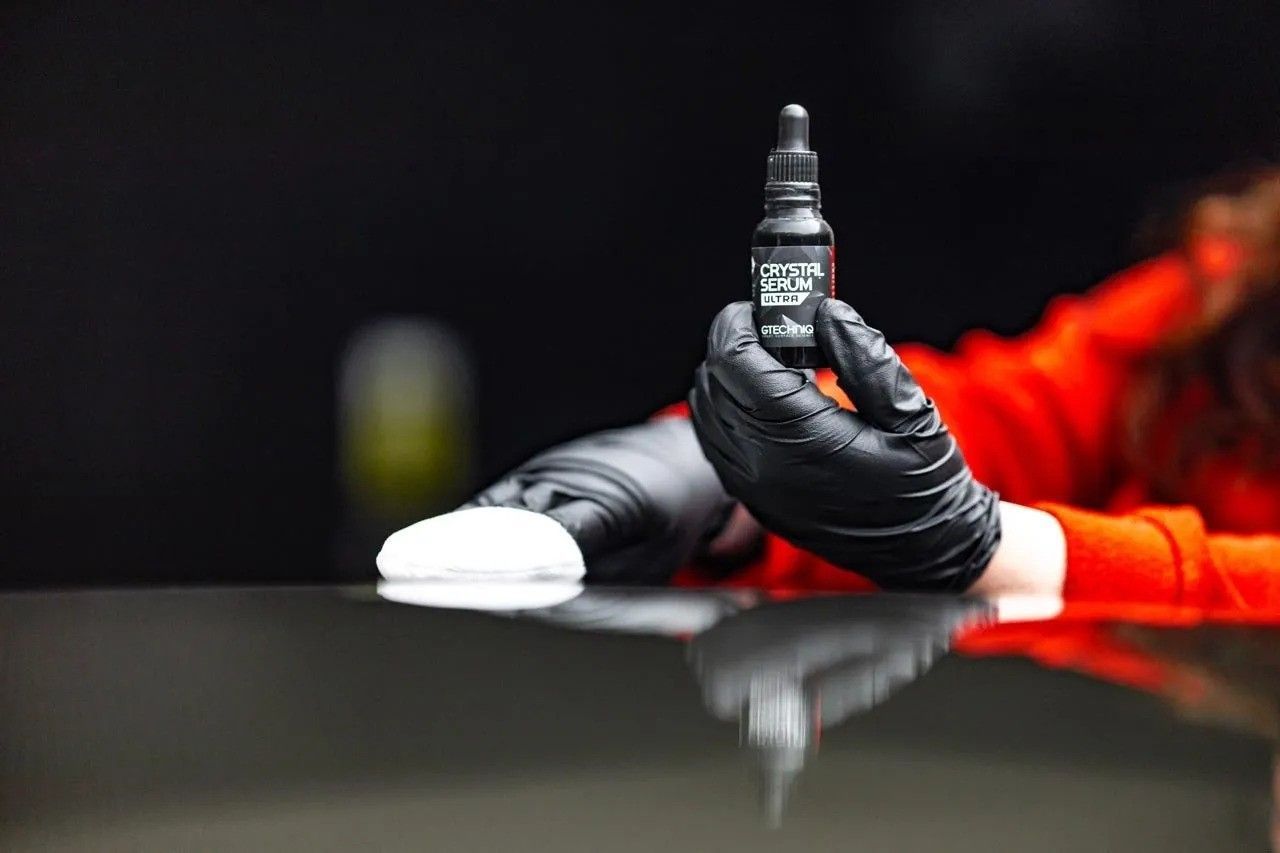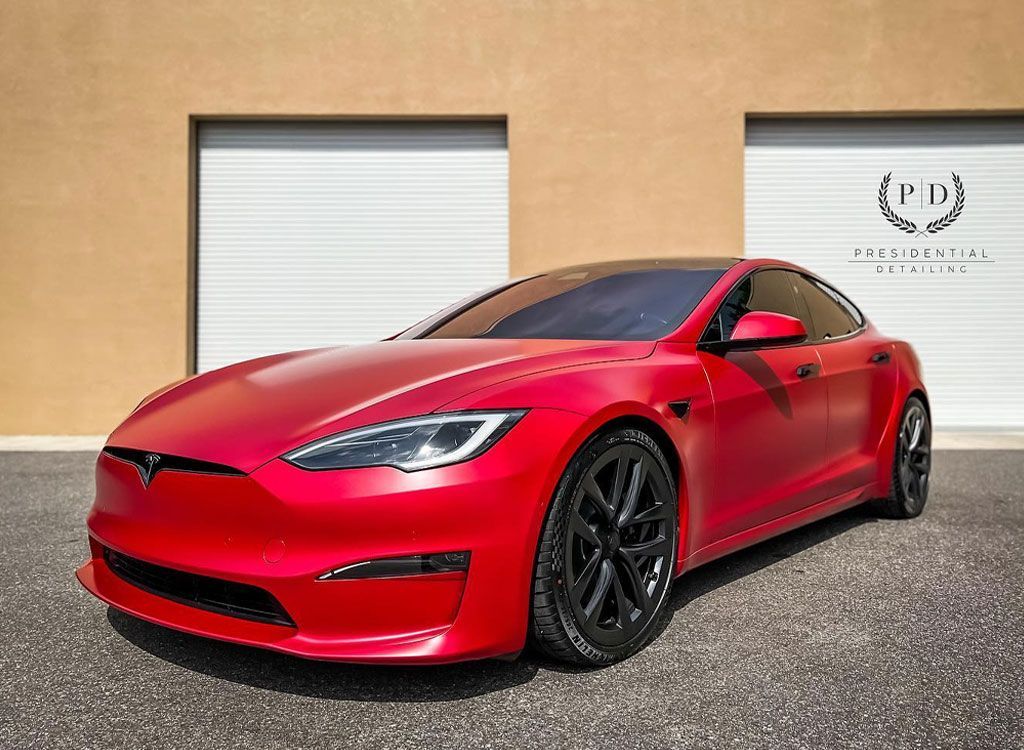The Importance of PPF Thickness: Why You Should Care About Your Car's Protection
CALL (813) 723-9679
GET A FREE ESTIMATEWhen it comes to maintaining the stunning look of your car, every detail matters. Paint protection film (PPF) may seem like just another add-on, but understanding its thickness can significantly influence the level of protection your vehicle receives. Think of PPF as the armor for your car's exterior; a thicker film provides better defense against scratches, chips, and environmental issues while keeping your paintwork looking fresh. Before you rush into a purchase, it's worth exploring how the thickness of PPF not only enhances your car’s appearance but can also save you money in the long run. Let's dive into why this is an important consideration for any car owner.
Considering the thickness of paint protection film (PPF) is crucial because a thicker film generally offers enhanced protection against scratches, chips, and environmental damage. Different thicknesses can provide varying degrees of durability and impact resistance, with thicker options often being better suited for high-risk areas of your vehicle, ultimately offering superior long-term value.
Why PPF Thickness Matters
The thickness of PPF has a direct relationship with its ability to protect your vehicle from various forms of damage. To put it simply, thicker films offer significantly more durability and resistance. For instance, a thicker PPF can absorb impacts better, safeguarding your car's paint from chips and scratches.
Imagine speeding down a rural road; those gravel stones can come flying at you unexpectedly. A thin 6-mil film might not hold up against that barrage as effectively as a 9.6-mil one would. In fact, studies suggest that thicker films, like those ranging from 10 to 12 mils, provide up to 30% greater impact resistance compared to their thinner counterparts.
But the benefits don't just stop at impact protection; there's also the matter of longevity. Thicker PPF generally has a longer lifespan. While a thinner film—about 6 mils—might only resist wear and tear for roughly five years, upgrading to a 12 mil version may extend that duration to nearly ten years, provided it's well cared for. This means fewer replacement costs over time.
Furthermore, thick films are also known to resist yellowing and degradation caused by UV exposure better than thinner options. Over five years, studies indicate there’s approximately a 50% reduction in discoloration when thicker films are used. Let’s consider the investment perspective. If you opt for a high-end PPF installation on your luxury car, which could set you back upwards of $1,200 but ultimately saves you from costly repainting fees that could range between $300 and $400 over time due to aesthetic damage—it's clear that opting for thicker films could pay off handsomely.
However, it's crucial to recognize that with great thickness comes greater cost. More often than not, opting for a thicker PPF will increase your overall costs by 20-40%. This can make some car owners hesitant about whether the investment is justified based solely on perceived benefits. It's essential then to weigh the pros and cons thoughtfully before making a decision.
Personal anecdotes reveal varied opinions; while some find that protective coverage is invaluable for maintaining their vehicle's appearance, others argue that repairs or touch-ups can be more cost-effective in the long run. Skeptics often highlight the limitations of PPF, arguing that no material can provide an impenetrable barrier against all damages. Even the thickest films aren't foolproof; substantial impacts may still penetrate the film and damage the paint beneath it.
Therefore, it’s vital to manage expectations about what PPF can realistically protect against while also considering additional measures for high-risk areas on your vehicle for added peace of mind. Knowing how thickness factors into overall protection offers critical insights and prepares you for a deeper understanding of the variety of options available in this realm.
Various Thickness Options Available
Paint Protection Film (PPF) thickness can dictate not only how well it guards against scratches, chips, and stains but also its longevity. With thicknesses generally ranging from 6 mils to 10 mils, you’ll want to carefully consider the driving conditions you're likely to face and how much wear and tear your car might endure. This way, you can tailor your choice to your lifestyle.
Common Thickness Ranges
The most commonly available thicknesses for PPF each come with specific benefits and suitable applications. For instance, a 6 mil film provides a lightweight option that's perfect for light city driving where minor abrasions or aesthetic issues are your primary concern. It's ideal for maintaining that showroom shine without being overly bulky. However, if you're using your vehicle more frequently in varied conditions, an 8 mil thickness strikes a good balance. It offers standard protection and is suitable for average driving scenarios, where the risk of debris on the road becomes more significant.
To further illustrate the differences in these options, consider the 10 mil film—this is where things ramp up considerably. Its robust durability makes it a solid choice for high-speed driving and off-road trips where rocks, dirt, and flying debris are common occurrences. Drivers who frequently encounter harsh conditions will find that investing in 10 mil PPF can save them from costly paint repairs down the line.
However, picking a thickness isn't just a numbers game; it’s essential to weigh factors like cost against potential damage costs over time as well. Understanding your vehicle's specific needs alongside your typical driving environment helps you align your PPF selection with your priorities. While a thinner film may be less expensive upfront, the potential for frequent repairs might cost you more in the long run. Choosing thicker PPF is often viewed as a more prudent investment over time—especially for drivers of luxury vehicles such as Lexuses or those utilizing vibrant paint colors like Infrared that are notoriously prone to chipping.
With this knowledge at hand, you can better appreciate how different thickness options can impact not only your immediate experience but also the long-term health of your vehicle's exterior.
Impact on Durability and Protection
The thin layer of PPF may look unassuming, but its thickness plays a monumental role in determining how well it will protect your car. As you might expect, the thicker the film, the more robust the protection it offers. For instance, a substantial PPF measuring over 8 mils can significantly diminish the chances of paint damage caused by scratches or road debris. In fact, according to a study conducted by the International Car Protection Association, using thicker PPF can reduce paint damage by up to 60%, making this option a wise investment for many vehicle owners.
While increased thickness contributes positively to durability, it’s essential to consider application and installation. Thicker films are sometimes costlier and often require expert installation to ensure proper adherence to your vehicle's surface. A less-than-perfect application could lead to bubbling or peeling, negating any benefits. Therefore, a meticulous approach during installation is vital. Investing in professional services may seem like an extra step, but it could save you from costly mistakes in the long run.
When considering your driving habits—especially if you frequently drive in urban environments filled with stone chips or gravel—a standard 8-mil PPF may suffice for everyday use without causing financial strain. However, if you find yourself navigating harsher terrains or taking long road trips where exposure to hazards increases, opting for a thicker film can provide peace of mind alongside improved durability. Now let's shift gears and talk about trade-offs. While a thicker PPF provides superior protection, it’s crucial to balance that against potential downsides such as cost and flexibility. Thicker films tend to be less pliant; thus, if you desire intricate installations or coverage over complex curves on your vehicle, thinner options may serve better in those situations. Imagine wrapping a delicate gift—it’s not just about putting on layers; it’s also about ensuring that each fold adheres well and looks appealing.
This delicate dance between protection and practicality leads us directly into our next exploration of how to choose the ideal PPF thickness suited for your unique needs and driving conditions.
Selecting the Best Thickness for Your Car
Not all vehicles are created equal, and neither are their protective needs. When choosing Paint Protection Film (PPF) thickness, assessing your personal driving conditions is crucial. For instance, if you often find yourself on highways where debris and rocks can fly toward your car, a thicker film—typically around 8 to 10 mils—is wise to invest in. This level of protection can absorb impacts that would otherwise leave nasty chips or scratches on the paint job.
By contrast, if you primarily drive in urban settings with smooth roads, you might lean towards a thinner film at about 6 or 7 mils. These thinner variations still provide good protection against mild abrasions from everyday wear and tear while being easier on the wallet. Equally important is understanding how your environment can shape your choice. If you live in a region with harsh weather conditions—like heavy rain, hailstorms, or intense sun—the resilience of a thicker PPF pays dividends. Not only does it protect against scratches and chips from road debris, but it also serves as a more reliable barrier against UV damage that can fade your car's paint over time. Urban drivers may not deal with the same threats from nature but will face challenges like parked cars scraping against theirs, another reason to lean towards thicker films for better defense.
Beyond location and driving conditions, your budget cannot be overlooked. While thicker films offer enhanced protection, they also come at a higher price point. Consider the long-term implications: initial costs might be steeper for thick films but they often reduce the frequency of needed reapplications compared to thinner options. Investing in a thicker option could lead to significant savings in both time and money in the long run.
Finally, let’s reflect on your vehicle’s value when selecting a suitable PPF thickness. If you've invested in a high-end vehicle or one that holds considerable resale value, opting for a thicker PPF is a strategic move. This layer of protection helps maintain the pristine condition of your car and enhances its worth should you decide to sell it down the line. Buyers are often willing to pay more for a vehicle that's been well-maintained and protected from wear and tear.
Understanding the nuances behind PPF thickness allows you to make informed decisions tailored specifically for your driving lifestyle. As we consider these factors further, it’s essential to explore the methods that will ensure effective application and maintenance of your chosen protective film.
Installation Tips for Optimal Performance
The right installation process is crucial; even the thickest and most durable PPF won't shield your car if it's not adhered correctly. This starts with choosing between a professional installation or tackling it as a DIY project. Many car owners find themselves torn between these options, weighing cost against peace of mind.
Professional installation guarantees that the film is applied flawlessly, minimizing the risks associated with bubbles, misalignment, or creases. A case study involving 50 vehicles found that those fitted with professional films experienced 30% fewer issues compared to their DIY counterparts. That statistic speaks volumes to those who desire optimal protection without headaches down the road.
Heat Guns and Proper Tools
For those opting to install PPF at home, using the right tools is paramount. A heat gun can be your best ally here, particularly when working with thicker films. Heat allows the film to become more pliable, enabling it to conform seamlessly to the car's curves and intricate designs.
Without heat, you might find yourself struggling with stubborn areas that just refuse to lay flat. Using specialized squeegees during application also aids in achieving that desirable smooth finish. These tools are designed specifically for spreading the film evenly while expelling any trapped air. Additionally, using an application spray can provide lubrication, making it easier to slide the film into position before securing it properly. However, installing PPF is just part of the equation; ensuring long-term effectiveness requires understanding care and maintenance following installation.
Care After Installation
Once your PPF is installed, understanding proper care becomes essential for maintaining its efficacy. Immediately after installation, it’s advisable to refrain from washing your vehicle for at least 24 to 48 hours. This allows the adhesive to set fully and ensures a strong bond between the film and your car’s surface.
Another important factor involves regularly inspecting the edges of the film, as minor lifting can happen occasionally; catching this early makes for relatively easy fixes. Regular cleaning routines should also steer clear of abrasive materials or harsh chemical cleaners, which can degrade both the PPF and your vehicle’s paint over time. Instead, opt for pH-balanced soaps and soft microfiber cloths to get that protective layer shiny without risk.
In doing this, you maintain a stellar appearance while extending the lifespan of both your paintwork and PPF investment. With a solid foundation in installation and maintenance laid out, let’s explore how these factors translate into tangible benefits for your vehicle down the road.
Real-World Benefits of Proper Thickness
One of the most striking advantages of investing in a thicker PPF is its unparalleled ability to withstand the harsh realities of daily driving. For many car owners, especially those who frequent highways or off-road terrains, minor debris can cause significant damage to a vehicle’s paintwork. Imagine cruising down the highway when suddenly a small rock ricochets off the road, potentially leaving an unsightly chip in your car’s finish. With a thicker film—typically around 10 mils compared to the standard 6 mil—you gain superior protection against such common threats.
There’s often an initial cost involved when opting for thicker PPF; however, consider this: avoiding paint repairs by choosing robust protection means significant financial savings in the long run. The value of maintaining your vehicle’s aesthetic appeal cannot be overstated. Investing in thicker PPF isn’t merely an enhancement; it’s essential for drivers who regularly navigate challenging environments.
Additionally, the thickness of PPF plays a pivotal role not only in physical damage prevention but also in preserving that showroom shine. A thicker film resists wear better and tends to have enhanced durability against environmental factors such as UV rays and chemical contaminants like bird droppings or tree sap.
While a ceramic coating addresses surface gloss and makes cleaning simpler, it doesn’t replace the necessity of PPF when it comes to physical protection. Thus, combining both solutions—PPF for optimal protection and ceramic coating for added aesthetics—creates a formidable barrier against potential damage. Think of this combo as two layers of defense for your vehicle: one layer keeps the paint safe from physical harm while the other ensures it shines effortlessly.
So when you are weighing your options, remember that thickness matters significantly in determining how well your PPF performs. Investing in a higher mileage not just prolongs the life and beauty of your vehicle but also translates into remarkable cost savings over time. To summarize, protecting your car is not merely about aesthetics; it's about making wise investments that yield long-term benefits for both appearance and financial savings. Choose wisely so you can enjoy peace of mind on every drive.
Unbeatable PPF Services in Tampa, FL
When it comes to safeguarding your vehicle’s finish, Presidential Automotive Detailing in Tampa, FL, offers the ultimate in paint protection services. Whether you're looking to shield your car from everyday wear or tackle the toughest road conditions, their expert team uses only the highest-quality paint protection solutions to keep your vehicle looking pristine. With advanced technologies like Paint Protection Film (PPF) and durable ceramic coatings, you can trust that your investment is protected for the long haul. Ready to keep your car shining with lasting brilliance? Book your appointment today and give your ride the protection it deserves.

